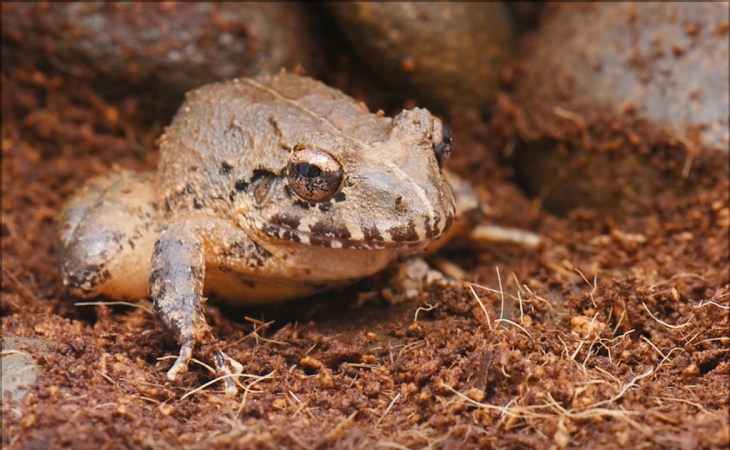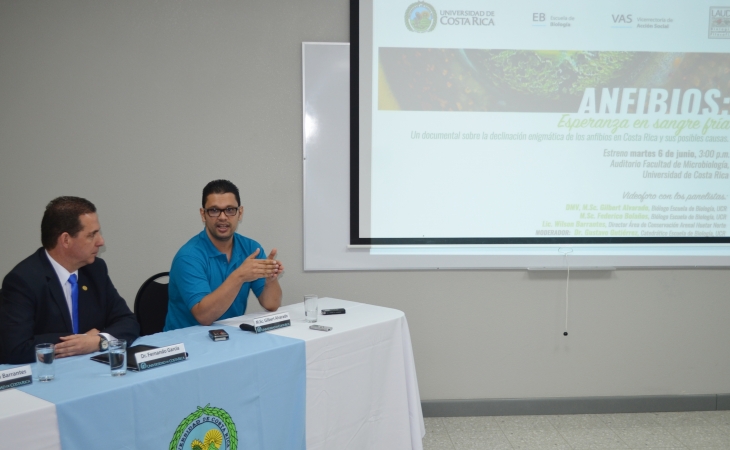The Heredia Robber Frog (Craugastor escoces), an amphibian that had not been seen for some time in Costa Rican forests, was rediscovered by scientists from the University of Costa Rica (UCR).

The Heredia Robber Frog whose Latin name is Craugastor escoces was rediscovered by UCR scientists in the Juan Castro-Blanco National Park located in the province of Alajuela, Costa Rica.
It is a brown frog with a particular red belly, which facilitated identification for the researchers, since it is the only one in its group with this feature.
This neotropical amphibian ceased to be observed more than thirty years ago and in 2004 it was declared extinct by the International Union for Conservation of Nature (IUCN).
The specimen found is an adult female of around two inches (6 cm). It was discovered by M.Sc. Gilbert Alvarado-Barboza, a researcher from the School of Biology at the UCR pursuing a doctorate at the University of Sao Paulo in Brazil. M.Sc. Randall Jiménez-Quirós also collaborated in the discovery; he is also studying for a doctorate degree from the University of Ulm, in Germany.
About the specimen found, M.Sc. Alvarado, a biologist and veterinarian, said: "we have decided to collect the animal to keep it alive. We have it under conditions that the chool of Biology has provided with the assembly of a laboratory to learn from it, since it has not been studied much, and we do not know about the biology, reproduction and habitat of this species."
The specimen was found on September 19, 2016 while both scientists were carrying out amphibian sampling as part of the field work of a research project related to another frog species called vibicaria.
The specimen was found in the Juan Castro-Blanco National Park, located in the province of Alajuela, near Ciudad Quesada, in one of the park's brooks at an altitude of 5971 ft (1820 m).
C. escoses had been described in the eastern and central part of the Central Volcanic Mountain Range, but not in the western part, where this national park is located, and where scientists believe a whole population of the frog must exist.
In the 90s, many species of amphibians disappeared in our country. Currently several of them are still considered extinct.
In 2004, the IUCN declared three species extinct, of which two have reappeared. One is this red-bellied frog and the other is the deaf-mute toad, or Holdridge's toad (Incilius holdridgei).
On the other hand, the disappeared golden toad or Monteverde toad, became a symbol of amphibian declines and is considered the first victim of global warming. However, with this finding, scientists do not rule out its reappearance.
On this important finding, the UCR Vice Rector for Research, Dr. Fernando García-Santamaría, said that the extinction of a species implies the reduction of diversity and the loss of genetic resources.
"Being able to announce the rediscovery of a species considered extinct, should fill us with happiness. But it is also a wake-up call to take immediate measures for the preservation of species whose populations are highly vulnerable," added the Vice Rector.

The official announcement of the rediscovery was given at a press conference held on June 6, 2017 in the multimedia room of the School of Social Sciences, in the City of Research, UCR